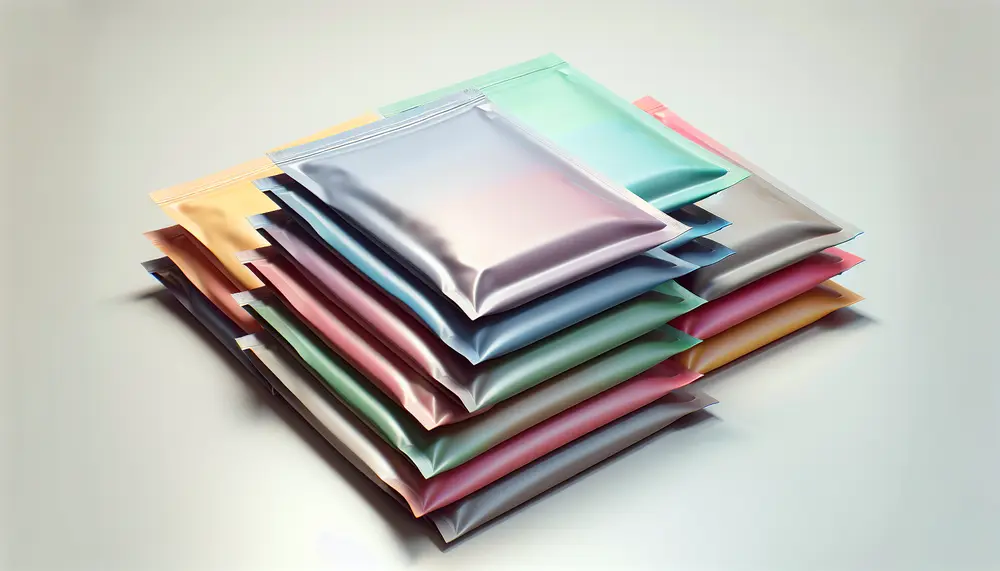Clamshell
Clamshell
Clamshell
A clamshell is a type of packaging commonly used in the retail industry. It gets its name from its hinged, shell-like design, which opens and closes like a clam. This packaging is made from clear plastic, allowing customers to see the product inside without opening it.
Design and Structure
The clamshell consists of two halves connected by a hinge. These halves snap together to form a secure enclosure. This design makes it easy to open and close, while also providing strong protection for the product.
Materials Used
Most clamshell packaging is made from PET (Polyethylene Terephthalate) or PVC (Polyvinyl Chloride). These materials are chosen for their durability and clarity. PET is also recyclable, making it a more eco-friendly option.
Common Uses
Clamshell packaging is widely used for electronics, toys, and food items. For example, you might find a clamshell package holding a new pair of headphones or a fresh salad. Its clear design helps showcase the product, making it appealing to customers.
Advantages
One of the main benefits of clamshell packaging is its visibility. Customers can see the product without opening the package, which helps in making purchasing decisions. Additionally, the secure closure protects the product from damage and tampering.
Disadvantages
Despite its benefits, clamshell packaging can be difficult to open without scissors or a knife. This has led to some frustration among consumers. Additionally, if not disposed of properly, plastic clamshells can contribute to environmental pollution.
Blog Posts with the term: Clamshell

Packaging in agriculture is crucial for protecting produce from farm to market, maintaining quality and freshness, and enhancing logistical efficiency. It reduces waste, ensures food safety, aids branding, and supports global trade by enabling access to wider markets....

OPP bags, known for their strength and clarity, are essential in packaging for protection, presentation, and preservation of products. They offer advantages like durability, resealability, cost-effectiveness but have drawbacks such as being non-biodegradable; various types exist to suit different applications. Different...

Packaging materials range from traditional paper and glass to modern bioplastics, each with unique properties affecting product safety, cost-effectiveness, and environmental impact. Selecting the right packaging is crucial for brand identity, customer satisfaction, and sustainability; factors like protection needs, branding...

Effective electronic packaging is essential for protecting devices during transport and storage, impacting customer satisfaction and brand reputation. A guide to materials like plastic cushioning, thermoformed plastics, shielding bags, foams, and desiccants helps in selecting the right protection based on...

Packaging for fruits and vegetables is crucial in ensuring produce reaches consumers fresh, extends shelf life by controlling moisture and airflow, protects from contaminants, and maintains hygiene. The choice of packaging materials like corrugated boxes or breathable bags depends on...

Amazon's packaging evolution reflects its commitment to innovation, sustainability, and customer satisfaction through initiatives like Frustration-Free Packaging, which reduces waste and enhances the unboxing experience. By leveraging eco-friendly materials, AI-driven optimization, and scalable solutions across product categories, Amazon has set...

Kebab packaging requires durability, functionality, and safety to maintain freshness and flavor; materials like Kraft paper and sugarcane pulp are popular for their sustainability. Eco-friendly options such as Bagasse and recyclable Kraft paper align with consumer environmental concerns, while personalized...

RPET packaging, made from recycled Polyethylene Terephthalate (PET), is a sustainable alternative to virgin plastic that reduces waste and greenhouse gas emissions. Europe leads in its use, driven by consumer demand for eco-friendly products and legislation promoting recycling and the...

Packaging materials are essential for product protection, quality preservation, and shelf life extension across industries; they must balance protection with presentation and logistics efficiency. The food industry uses diverse packaging types like plastics, biodegradables, glass, metals, paper-based solutions to meet...

Flat bags are essential, cost-effective packaging with a space-saving design used across industries and can be made from sustainable materials. They offer customization for branding, durability against environmental factors, and versatility in applications ranging from fashion to food industry while...

Maintaining mushroom freshness during packaging is complex, requiring careful control of respiration, moisture, microbial risks, and environmental gases. Success depends on precise harvest timing, gentle handling, optimal humidity and temperature conditions, strict hygiene practices, and selecting tailored packaging materials to...
